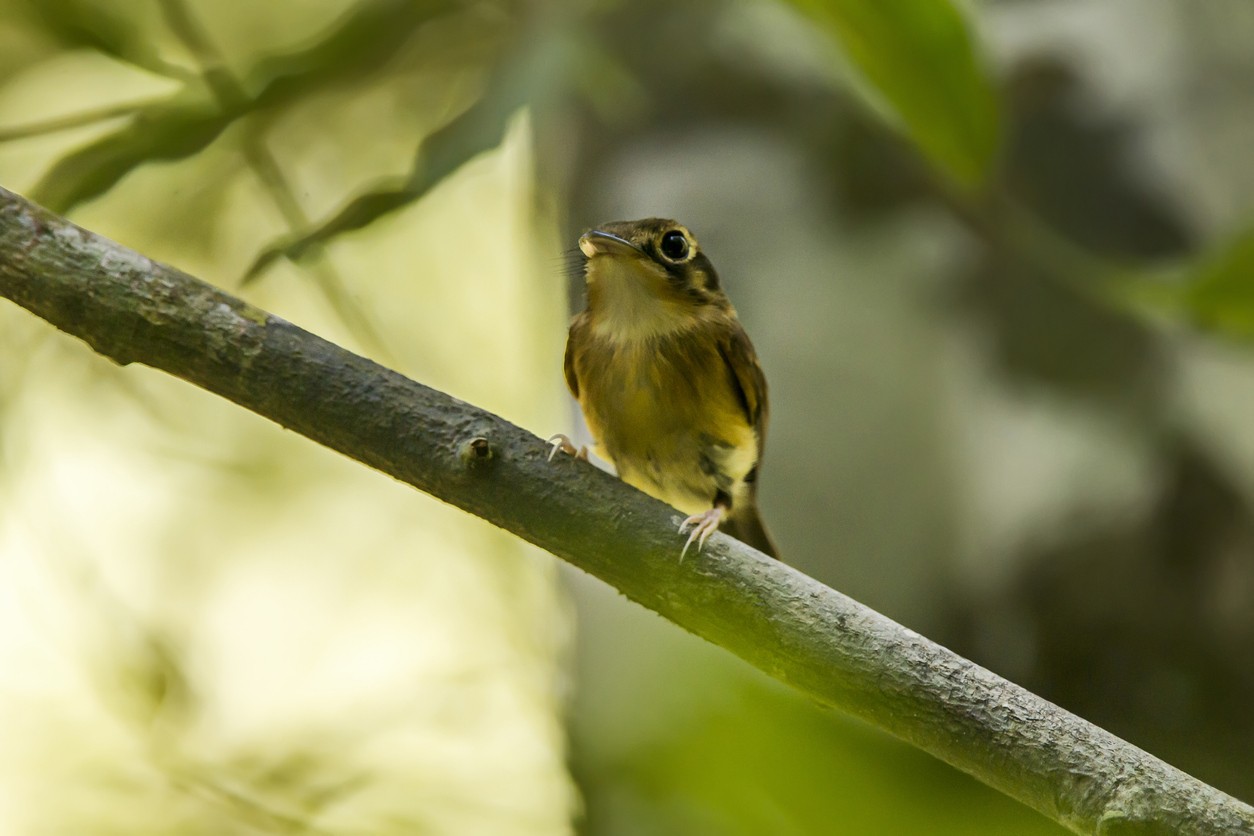White-throated Spadebill
A species of Spadebills Scientific name : Platyrinchus mystaceus Genus : Spadebills
White-throated Spadebill, A species of Spadebills
Botanical name: Platyrinchus mystaceus
Genus: Spadebills
Content
Description General Info

Description
The adult white-throated spadebill is 3.8 in (9.7 cm) long, weighs 0.33 oz (9.3 g), and has large eyes and a very short tail. The large head is distinctively marked, with a long yellowish supercilium, blackish ear coverts, yellow eyering, and a black stripe down each side of the neck. The crown has a concealed yellow crest, which is erected as a fan by the singing male. The upperparts are dark olive brown, and the underparts are buff apart from the white throat. The bill is black above and brown below, and is very broad and flat, hence the English and scientific names "spadebill" and Platyrinchus. Sexes are similar, other than the female having a smaller crown patch, but young birds are brighter and ruddier above, lack the crown patch, and have a grey throat and breast shading to a whitish belly. They are not particularly vocal but have a sharp chweet call. The subspecies Platyrinchus mystaceus insularis occurs only in Trinidad, Tobago and in Venezuela, other forms differing in the brightness of the underparts or the crown colour. The taxonomy of this species is uncertain, with some dubious subspecies, but also the possibility that what is usually treated as the white-throated spadebill consists of more than one species. 
Size
10 cm
Nest Placement
Tree
Feeding Habits
White-throated Spadebill feeds primarily on arthropods, capturing its prey through agile foraging in understory vegetation and using its broad bill to snatch insects. It exhibits unique hunting behaviors tailored to dense forest habitats.
Habitat
White-throated Spadebill is typically found in the thick undergrowth of diverse forest habitats, ranging from humid lowland and montane forests to dry and gallery forests. It also inhabits secondary woodlands and is sometimes seen in brushy areas or bamboo thickets at the edges of these forests. The species prefers areas with tangled vegetation and medium-sized trees, thriving from sea level up to elevations of 2150 meters, depending on the regional topography. Its habitat spans broad geographical regions of tropical and subtropical environments in the Western and Eastern parts of its range.
Dite type
Insectivorous
General Info
Feeding Habits
Bird food type
Distribution Area
The white-throated spadebill breeds from Costa Rica through South America to western Ecuador, Brazil, and northeastern Argentina. It also occurs on both Trinidad and Tobago. This bird was recently found to be far more common on the Amazonian slope of the Colombian Cordillera Oriental than it was believed in the 20th century. It is not rare in its wide range, and thus not considered a threatened species by the IUCN. This species is found in wet hill forests and will to some extent use secondary forest and other disturbed habitat. It likes habitat with thick, tangled undergrowth and medium-sized trees with a canopy height of 33–100 ft (10–30 m) such as Elaeagia (Rubiaceae) and Hieronyma oblonga (Phyllanthaceae), overgrown with epiphytes and hemiepiphytes (e.g. Clusiaceae). White-throated spadebills are solitary active birds, difficult to see as they move rapidly through the undergrowth in search of small arthropods, their mainstay food. These are taken with a sudden upward-darting sally flight and audible bill-snap from under the foliage, or less often from mid-air. This species occasionally joins mixed-species feeding flocks. The deep cup nest is made of dead grass and plant fibres and placed low in a sapling. The typical clutch is two yellow-tinged white eggs with a rufous wreath. 


Scientific Classification
Phylum
Chordates Class
Birds Order
Perching birds Family
Tyrant flycatchers Genus
Spadebills Species
White-throated Spadebill